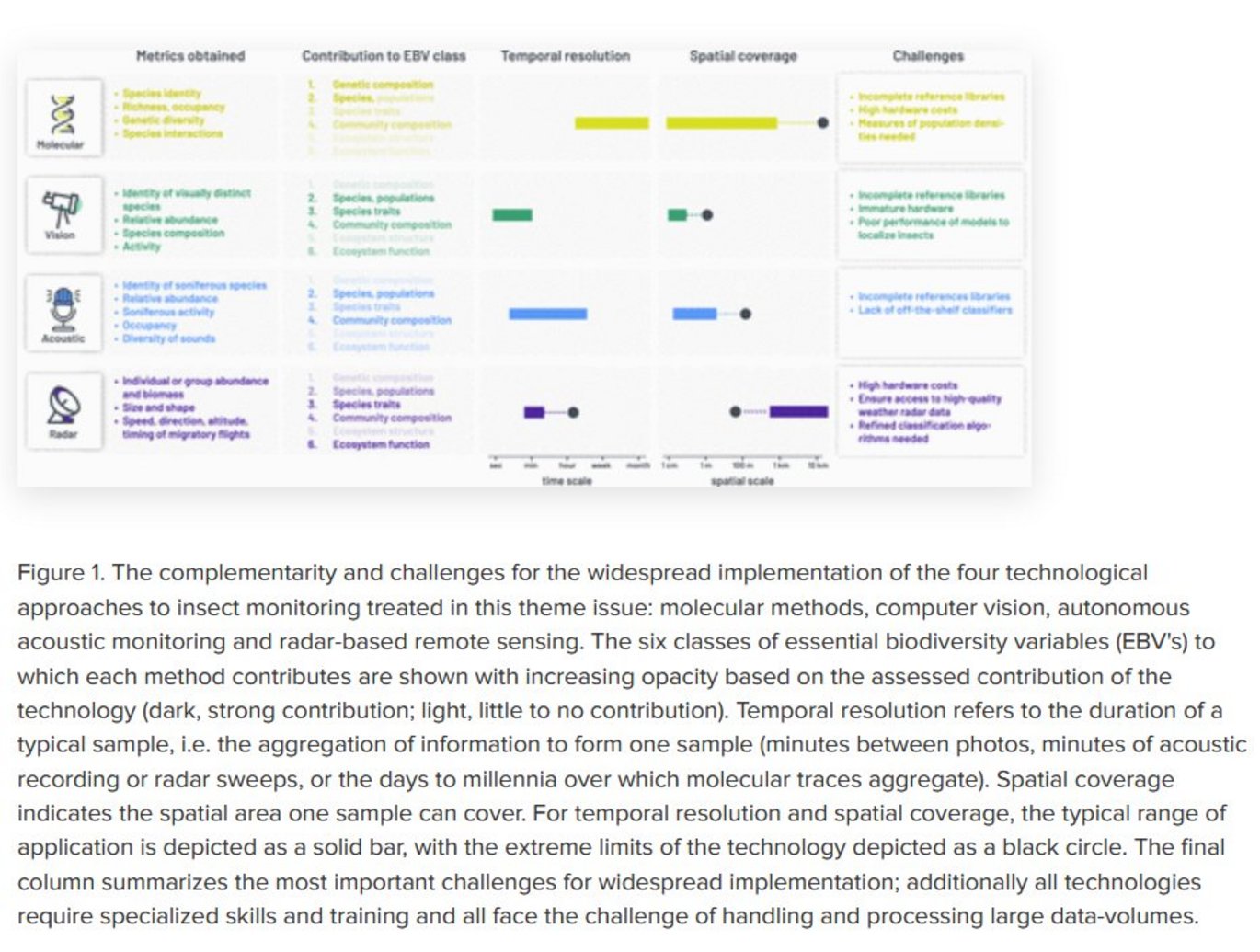Towards a toolkit for global insect biodiversity monitoring
New publication by Roel Van Klink, Julie Koch Sheard, Toke T. Høye, Tomas Roslin, Leandro A. Do Nascimento, Silke Bauer

Abstract:
Insects are the most diverse group of animals on Earth, yet our knowledge of their diversity, ecology and population trends remains abysmally poor. Four major technological approaches are coming to fruition for use in insect monitoring and ecological research - molecular methods, computer vision, autonomous acoustic monitoring and radar-based remote sensing - each of which has seen major advances over the past years. Together, they have the potential to revolutionize insect ecology, and to make all-taxa, fine-grained insect monitoring feasible across the globe. So far, advances within and among technologies have largely taken place in isolation, and parallel efforts among projects have led to redundancy and a methodological sprawl; yet, given the commonalities in their goals and approaches, increased collaboration among projects and integration across technologies could provide unprecedented improvements in taxonomic and spatio-temporal resolution and coverage. This theme issue showcases recent developments and state-of-the-art applications of these technologies, and outlines the way forward regarding data processing, cost-effectiveness, meaningful trend analysis, technological integration and open data requirements. Together, these papers set the stage for the future of automated insect monitoring. This article is part of the theme issue 'Towards a toolkit for global insect biodiversity monitoring'.
